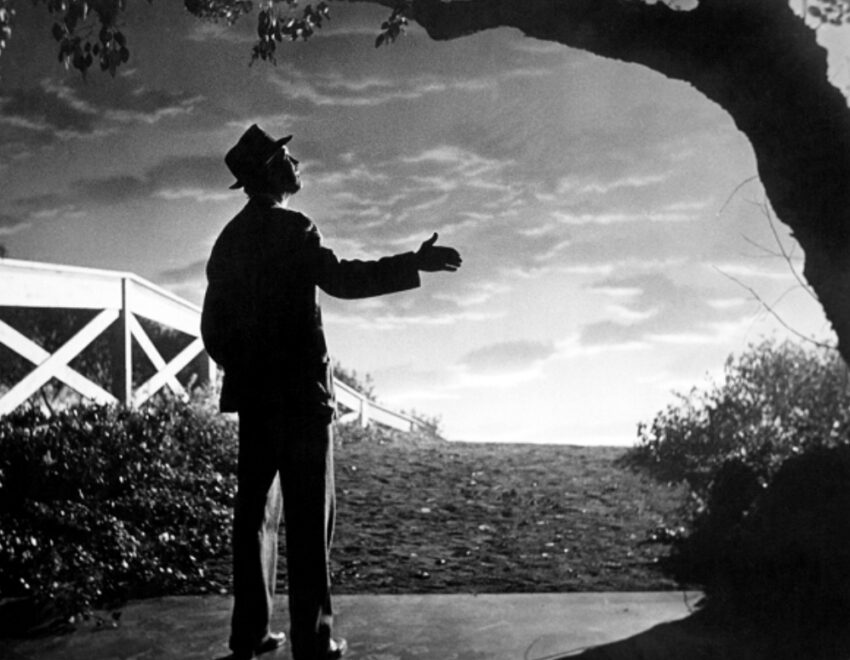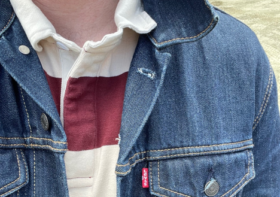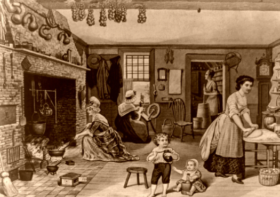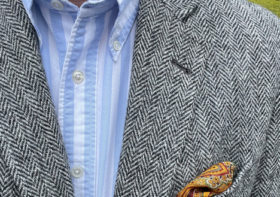Your Clothes Aren’t THAT Important

I know, I know…it’s weird that I would write an article about how your clothes aren’t important given the fact that I, ya know, run a site about how important clothes are.
But I saw something online recently that got me thinking and I would like to share it with you.
I stumbled on a clip of actor Chris Evans at two separate awards shows warmly offering his arm to Regina King and Betty White. Perhaps you’ve seen it.
In the instance with King, it appears she stands to accept her award but her dress gets a little tangled in her legs. She pauses to adjust it and seems a little unsteady. Evans, nearby, who was already standing and applauding King’s win, leans over and holds out his arm for her to grab for stability.

She accepts and once her dress is righted Evans escorts her a few feet to the steps of the stage.

Similarly with White, she rises from her seat prior to approaching the stage and Evans offers his arm for her to hold for stability, presumably due to White’s advanced age.


I enjoyed the clip mostly because it shows someone doing something nice for other people, but the comments section was absolute gold!
One commenter wrote, “Chris Evans is written by a woman.”
My wife had a good laugh at that one.
Unsurprisingly, people were positively swooning over Evans and his chivalry. It certainly doesn’t hurt that Evans is handsome and well-dressed, but it wasn’t necessarily those traits that got people all hot and bothered. It was his warmth and confidence that communicated his magnetism in a matter of seconds.
Also, and most importantly for the purposes of this article, IT DIDN’T MATTER WHAT HE WAS WEARING!
With both instances, without looking at the pictures, I am struggling to recall what exactly Evans had on. I think a tuxedo with King and a blue sweater with White. But that’s all I got!
I don’t remember if his jacket was too short or the lapels were too skinny. I don’t remember if his sweater and pants weren’t of compatible color “temperatures”. I don’t recall if he had a proper waist covering or closed-laced shoes. I am unsure regarding his trouser-break situation.
If I had seen a static picture of him on the red carpet I probably would have found a couple things about his outfit to nit-pick.
But seeing him as a full living, breathing, moving, smiling, talking, laughing package, I immediately thought, “Wow, that guy is really stylish!”
What’s my point here?
My point is that we all get so worked up over pictures we see on the internet. Those pictures influence what we think about our own style and sartorial competence. This can be helpful, sure, but it can also be detrimental if we aren’t careful. We see a picture of a guy standing still in a suit with perfect proportions and then get all bent out of shape when we can’t completely replicate those proportions ourselves.
We get worked up over the details around trouser rise, tie knot dimples, sleeve pitch, pattern matching, and a whole host of other minutiae. Sure, for enthusiasts that stuff is enjoyable. But for the vast majority of regular guys it can feel like you’ll never get it right now matter how hard you try.
There’s a funny scene in New Girl where the character of Schmidt is constantly obsessing over the length of his jacket sleeves in relation to his shirt cuff.
I feel seen!
But remember that when you get dressed in the morning and head out the door, you are not a static photograph. People won’t see you standing stock-still and examine every detail. They’ll see you move and flow and interact with your world. They won’t see the little imperfections (if you can even call them that) that you see when you look in the mirror. They will see the whole tapestry of you, which includes your personality.
And if your personality is on point then what you wear won’t necessarily be seen on you. That was one of the lessons in menswear I gleaned from reading Anna Karenina.
It also made me think of an instance which I feel is relevant for this article…
Once, not too long after leaving college, I was in a bar with a group of friends. It was a “beer hall”-type place so the tables were long and the seats were benches. This meant that you were sitting at the same table with other people.
There were two gentlemen sitting to my left with whom we started chatting. One of them, Ira (yes, I remember that all these years later), was one of the most magnetic and charismatic people I have ever encountered. He was probably in his early 40s. Bald. Overweight. Not too dissimilar in appearance from Shrek. But, man, did he have a way about him! He was so charming that the girls in our group (who were probably 20 years younger than him at the time) were totally smitten!
He participated in our conversation, but didn’t try to dominate it. He complimented the women in the group without being creepy. He joked without going too far. He was self-deprecating enough to make it clear he didn’t take himself too seriously, but not so much that it became annoying or uncomfortable.
His social skills were really something to behold. Everyone loved this guy!
But it didn’t matter what he was wearing.
I remember this guy’s name sixteen years later but I don’t remember what he was wearing. If that doesn’t prove the point of this article then nothing does!
Another great example of how clothing isn’t that important is Jimmy Stewart’s character, Elwood P. Dowd, in the movie Harvey. If you’re unfamiliar with the story, Stewart plays a polite gentleman whose best friend is a 6-foot-three-inch, invisible rabbit named Harvey. Dowd’s sister is trying to get him committed to a mental institution.
Throughout the story, Dowd interacts with a whole host of other characters who mostly believe him to be nuts. Stewart wears one costume throughout the whole film, which consists of a rather shabby tweed suit, a cardigan sweater under the jacket, and a battered fedora.


So, Dowd is considered crazy and is not particularly well-dressed (for the time). And yet, he charms the socks off everyone he meets, including the young nurse at the institution. It’s not flirtatious, though. Dowd simply sees the beauty in everyone.


“Miss Kelly, do you know, when you wear my flower, you make it beautiful. My dear, you’ve never looked lovelier.”
Dowd’s pleasantness is not superficial, either. He takes a true, genuine interest in his fellow man. He learns and remembers everyone’s names. He introduces people to each other and fosters connections between them. Everyone is drawn to Dowd, but it’s not because he is particularly handsome or well-dressed. The doctor in the film, played by Charles Drake, is much more conventionally attractive, but he is practically wallpaper when Dowd is in the room.
At the end of the film, Dowd’s sister decides she doesn’t want him committed. He is such a rare and beautiful soul that she doesn’t want him to change, even if he goes right on seeing Harvey.
So, take as much time as you want in front of the mirror each morning. But if you’re feeling a little self-conscious or a little down and you feel like you’re not reaching your style potential, just give someone a smile or a kind word, remember someone’s name, or offer an arm or a helping hand.
Someone might just mistake you for a superhero.



